Papacy began 6 October 891 Papacy ended 4 April 896 | Birth name ??? Term ended April 4, 896 AD Name Pope Formosus | |
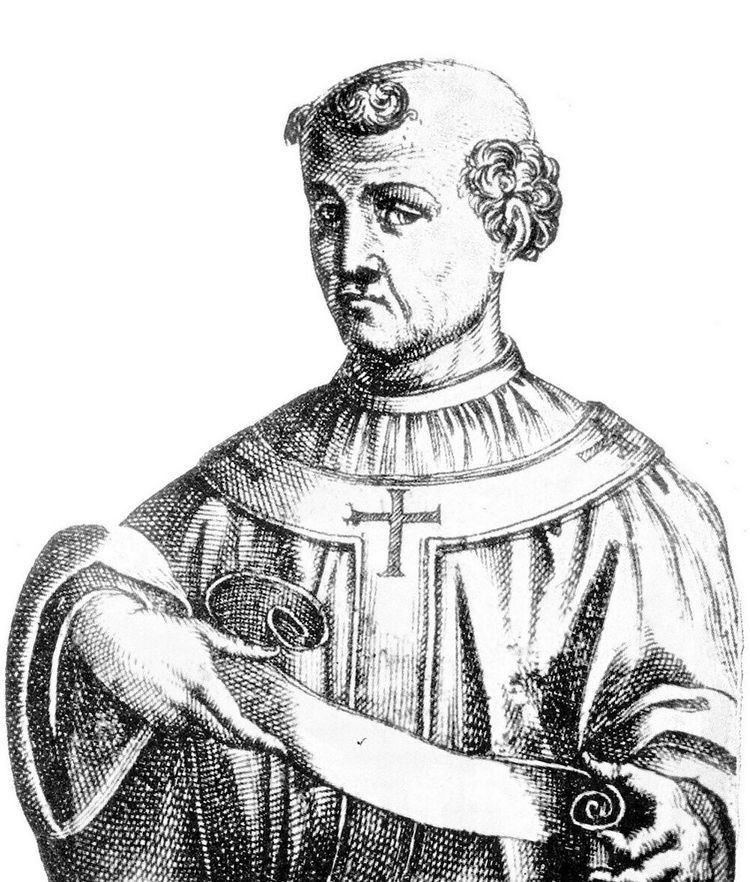 | ||
Died April 4, 896 AD, Rome, Italy | ||
The trial of the corpse of pope formosus
Pope Formosus (birth name unknown; c. 816 – 4 April 896) was Pope from 6 October 891 to his death in 896. His brief reign as Pope was troubled, and his remains were exhumed and put on trial in the Cadaver Synod.
Contents
- The trial of the corpse of pope formosus
- THE TRIAL OF THE CORPSE POPE
- Biography
- Papacy
- Posthumous trial
- References
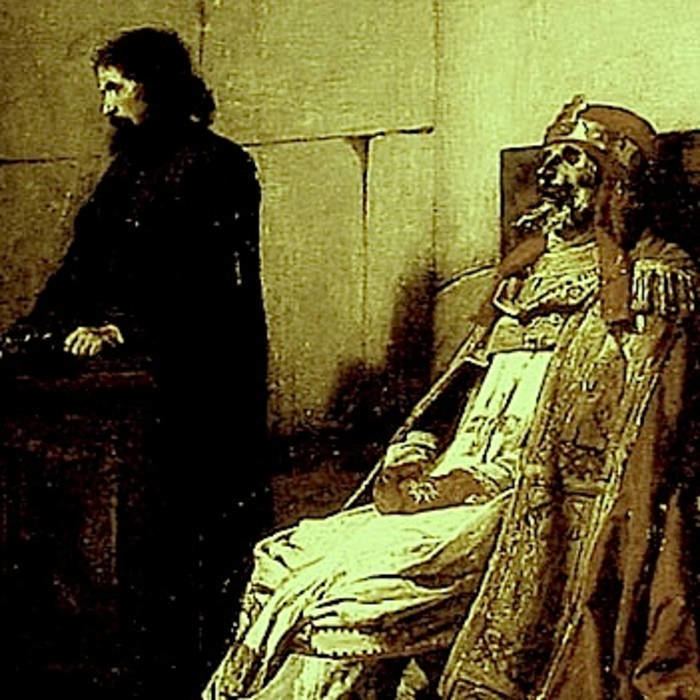
As Cardinal-Bishop of Portus, he represented the Papacy on a number of diplomatic missions. Shortly after the installation of Charles the Bald as Holy Roman Emperor, fearing certain political repercussions on the part of Pope John VIII, Formosus fled to Tours. Upon refusing a directive to return, he was subsequently excommunicated. The sentence was withdrawn in 878, upon his promising never to return to Rome. In 883, Formosus was reinstated by Pope Marinus I.
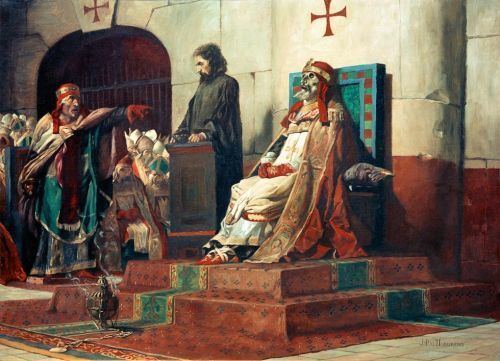
THE TRIAL OF THE CORPSE POPE!
Biography
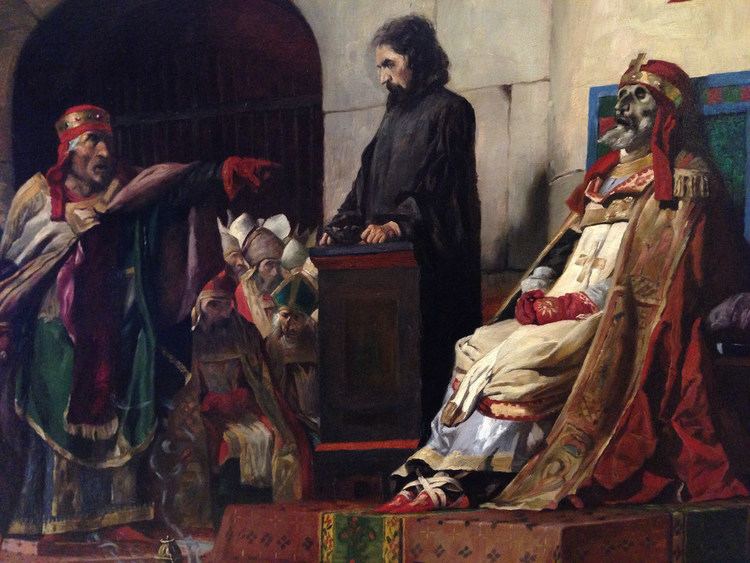
Probably a native of Rome, Formosus was born around 816. He became Cardinal Bishop of Portus in 864. Two years later, Pope Nicholas I appointed him a papal legate to Bulgaria (866). He also undertook diplomatic missions to France (869 and 872).
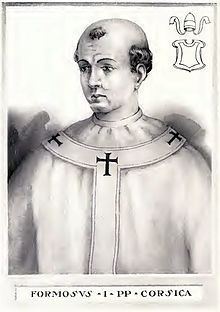
Upon the death of Louis the Pious in 875, the nobles elected his son by his second wife, Judith of Bavaria, Charles the Bald, King of the Franks to be Holy Roman Emperor. Cardinal Formosus conveyed Pope John VIII's invitation for King Charles to come to Rome to be crowned emperor. Charles took the crown at Pavia and received the imperial insignia in Rome on 29 December. Those who favored the widowed Empress Engelberga or her brother-in-law, Louis the German did not support the coronation. Fearing political retribution, many of them left Rome surreptitiously. Formosus, sensing he had somehow incurred the papal displeasure, went to Tours. On April 19, Pope John VIII called a synod which ordered Formosus and other papal officials to return to Rome. When Formosus did not comply he was removed from the ranks of the clergy and excommunicated on the grounds that he had had deserted his diocese without papal permission; and had aspired to the position of Archbishop of Bulgaria. Additional charges included that the accusations that he had opposed the emperor; "conspired with certain iniquitous men and women for the destruction of the papal see"; and had despoiled the cloisters in Rome.
The condemnation of Formosus and others was announced in July 872. In 878 the sentence of excommunication was withdrawn after he promised never to return to Rome or exercise his priestly functions.
In 867, while Formosus was serving as legate to the Bulgarian court, Prince Bogoris requested that he be named Archbishop of Bulgaria. Since the canons forbade a bishop to leave his own see to undertake the government of another, the request was denied. As early as 872 he was a candidate for the papacy; Johann Peter Kirsch suggests that the Pope may have viewed the Cardinal as a potential rival.
In 883, John's successor, Pope Marinus I, restored Formosus to his suburbicarian diocese of Portus. Following the reigns of Marinus, Pope Hadrian III (884–885) and Pope Stephen V (885–891), Formosus was unanimously elected Pope on 6 October 891.
Papacy
Shortly after Formosus' election, he was asked to intervene in Constantinople, where the Patriarch Photius had been ejected and Stephen, the son of Emperor Basil I, had taken the office. Formosus refused to reinstate those who had been ordained by Photius, as his predecessor, Stephen V, had nullified all of Photius' ordinations. However, the eastern Bishops determined to recognize Photius' ordinations nonetheless.
Formosus also immediately immersed himself in the dispute between Odo, Count of Paris, and Charles the Simple for the French crown; the Pope sided with Charles, and zealously exhorted Odo (then holding the crown) to abdicate on Charles' behalf, to no avail.
Formosus was deeply distrustful of Guy III of Spoleto, the Holy Roman Emperor, and began looking for support against the Emperor. To bolster his position, Guy III forced Formosus to crown his son Lambert as co-Emperor in April 892. The following year, however, Formosus persuaded Arnulf of Carinthia to advance to Rome, invade the Italian peninsula, and liberate Italy from the control of Spoleto.
In 894, Arnulf's army occupied all the country north of the Po River. Guy III of Spoleto died in December, leaving his son Lambert in the care of his mother Agiltrude, an opponent of the Carolingians. In autumn 895 Arnulf undertook his second Italian campaign, progressing to Rome by February and seizing the city from Agiltrude by force on February 21. The following day, Formosus crowned Arnulf Holy Roman Emperor in St. Peter's Basilica. The new emperor moved against Spoleto but was struck with paralysis on the way and was unable to continue the campaign.
During his papacy he also had to contend with the Saracens, who were attacking Lazio.
On 4 April 896, Formosus died. He was succeeded by Pope Boniface VI.
Posthumous trial
Pope Stephen VI, the successor of Boniface, influenced by Lambert and Agiltrude, sat in judgment of Formosus in 897, in what was called the Cadaver Synod. The corpse was disinterred, clad in papal vestments, and seated on a throne to face all the charges from John VIII. The verdict was that the deceased had been unworthy of the pontificate. The Damnatio memoriae, an old judicial practice from Ancient Rome, was applied to Formosus, all his measures and acts were annulled and the orders conferred by him were declared invalid. The papal vestments were torn from his body, the three fingers from his right hand that he had used in consecrations were cut off and the corpse was thrown into the Tiber (later to be retrieved by a monk).
Following the death of Stephen VI, Formosus' body was reinterred in St Peter's Basilica. Further trials of this nature against deceased persons were banned, but Pope Sergius III (904–911) reapproved the decisions against Formosus. Sergius demanded the re-ordination of the bishops consecrated by Formosus, who in turn had conferred orders on many other clerics, causing great confusion. Later the validity of Formosus' work was re-reinstated. The decision of Sergius with respect to Formosus has subsequently been universally disregarded by the Church, since Formosus' condemnation had little to do with piety and more to do with politics.
Bartolomeo Platina writes that Sergius had the much-abused corpse of Formosus exhumed once more, tried, found guilty again, and beheaded, thus in effect conducting a second Cadaver Synod, while Joseph Brusher, S.J. says that "Sergius [III] indulged in no resurrection-man tactics himself" and Schaff, Milman,Gregorovius, von Mosheim, Miley, Mann, Darras, John the Deacon of Naples, Flodoard, and others make no mention of this story.
